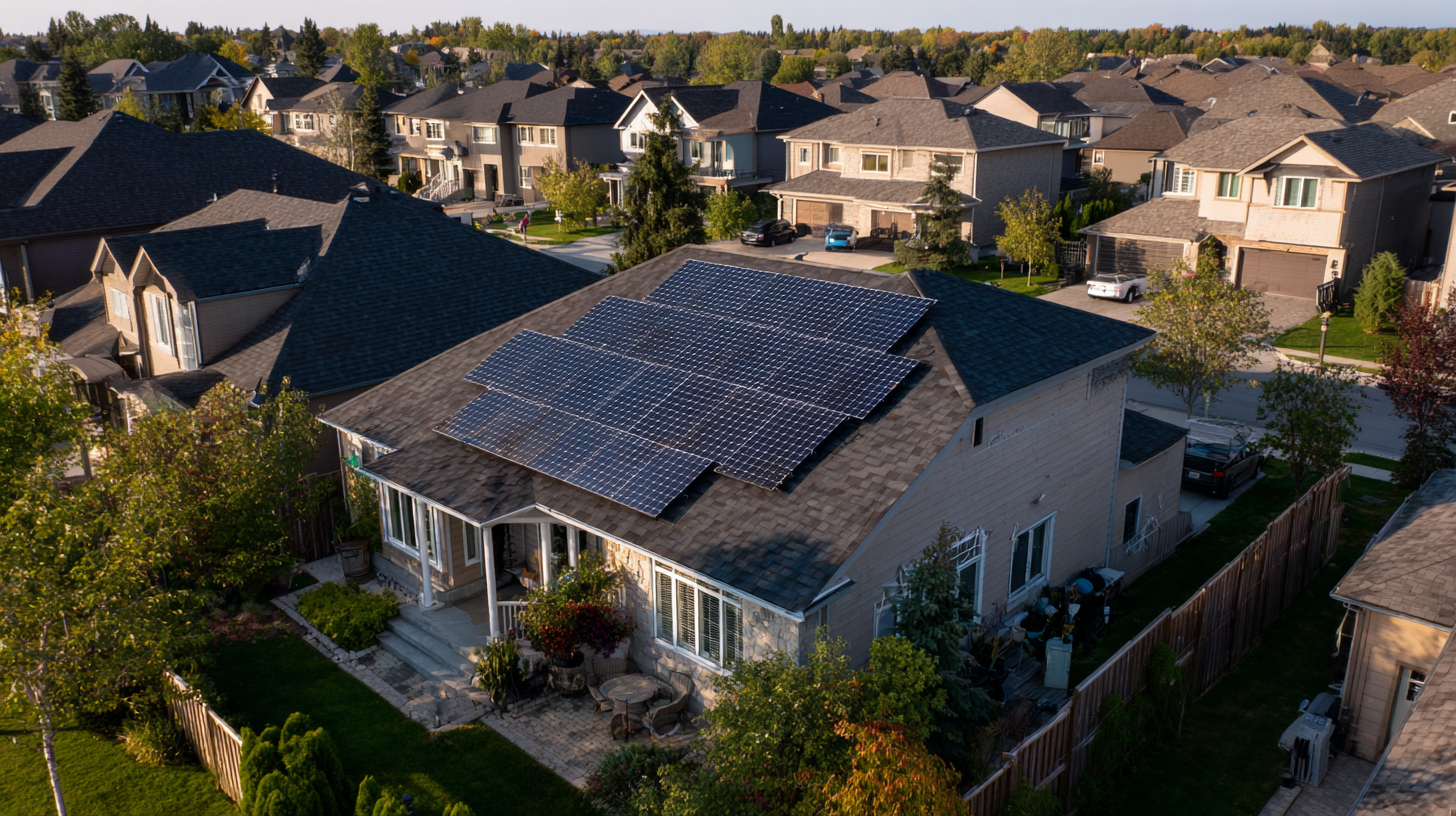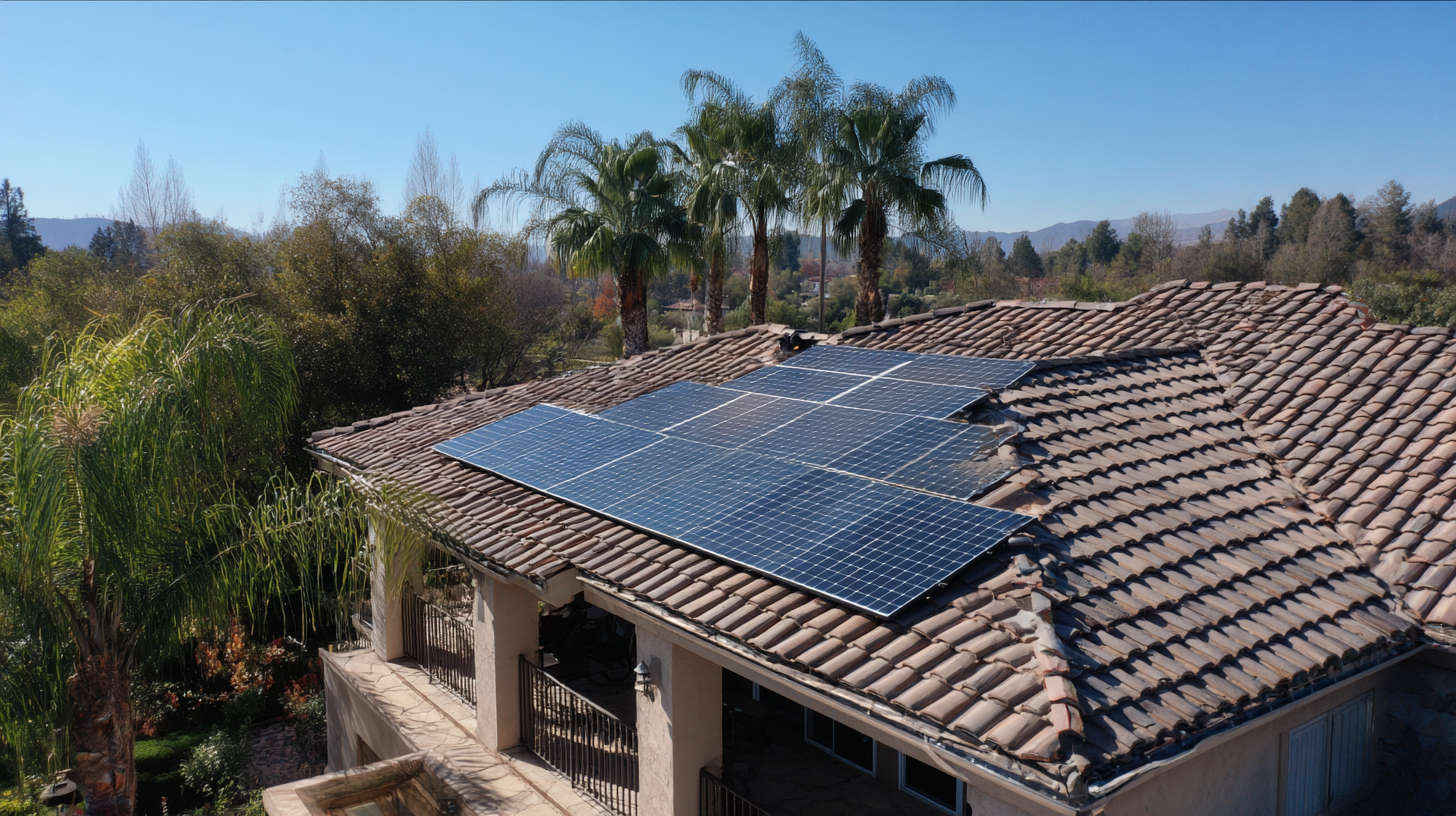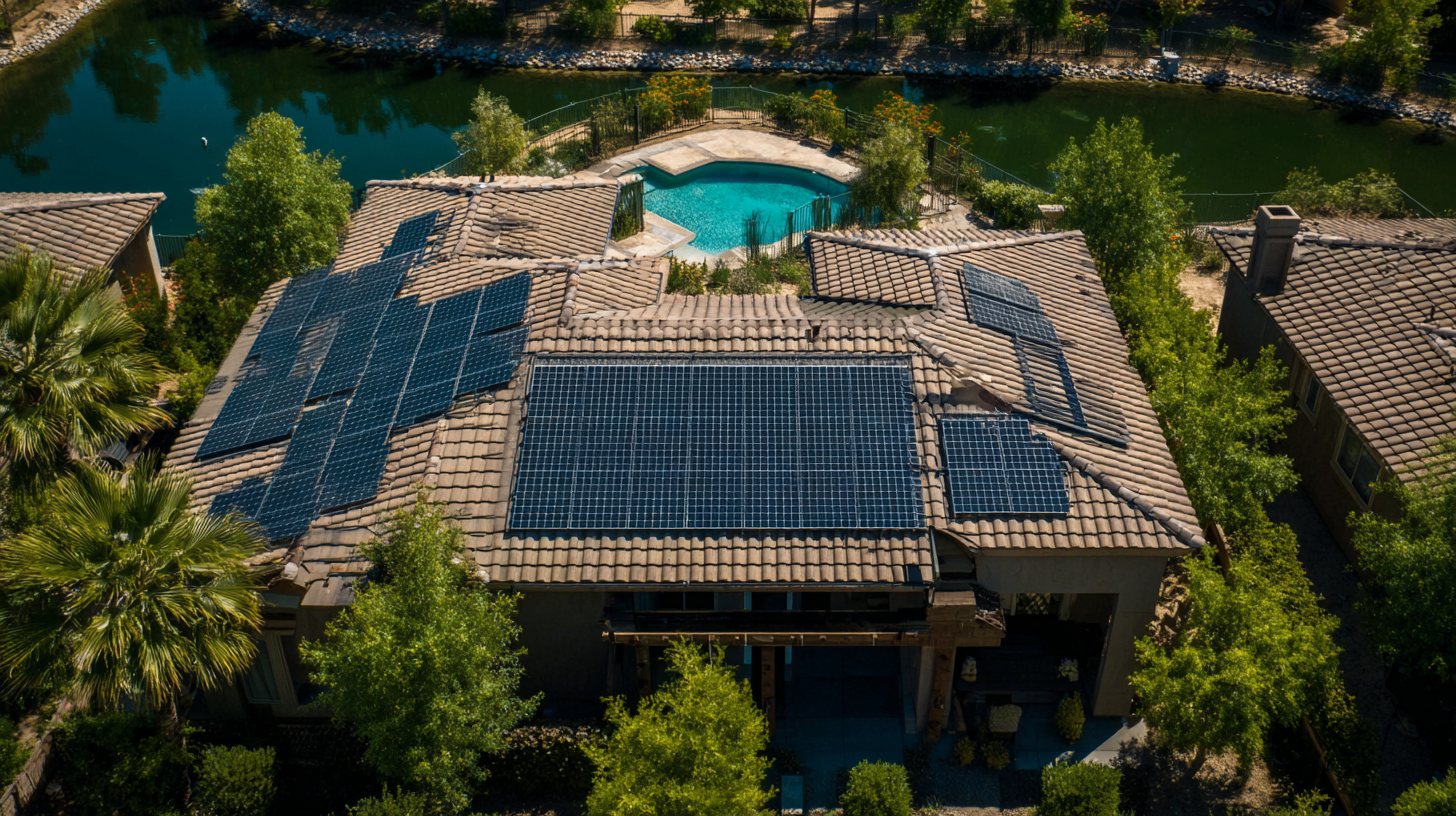As the demand for sustainable energy solutions continues to rise, the adoption of residential solar systems has become increasingly crucial for homeowners looking to maximize efficiency and reduce utility costs. According to the Solar Energy Industries Association (SEIA), residential solar installations grew by 20% in 2022, showcasing a significant shift towards clean energy alternatives. In 2023, with technological advancements and favorable policies, consumers have more options than ever for optimizing their solar investments. This blog will explore the seven proven tips to maximize efficiency with the best residential solar systems, incorporating detailed technical specifications and practical guidance on how to enhance energy production and savings. Embracing these strategies not only benefits individual households but also contributes to broader environmental goals.

Harnessing solar energy offers numerous advantages for homeowners in 2023, making it an increasingly popular choice for those looking to enhance their energy independence. One of the most significant benefits is the potential for substantial savings on electricity bills. By installing a residential solar system, homeowners can significantly reduce their reliance on grid power, leading to lower utility costs. Additionally, many regions offer tax incentives and rebates that can further decrease the initial investment, making solar energy an economically attractive option.
Beyond financial savings, solar energy contributes to environmental sustainability. By utilizing renewable energy from the sun, homeowners can significantly decrease their carbon footprint and contribute to efforts in combating climate change. This shift not only benefits the individual household but also has a collective positive impact on the environment. Furthermore, as solar technology continues to advance, the efficiency and affordability of solar systems are on the rise, making it an increasingly viable option for many homeowners. By understanding these key benefits, it's clear that the move to solar energy in 2023 is not just a trend, but a smart and responsible choice for the future.
This chart represents the efficiency percentages of different solar panel types available for residential use in 2023. Homeowners can use this data to select the best solar system that maximizes energy production and investment returns.
When selecting the right solar system for residential use in 2023, it's essential to consider several key factors that directly influence efficiency. One primary consideration is the solar panel type, with monocrystalline panels typically offering higher efficiency rates, often exceeding 20%. According to the National Renewable Energy Laboratory (NREL), these panels convert sunlight to energy more effectively than their polycrystalline counterparts, which usually yield around 15-17% efficiency. Choosing the right panel type can significantly boost energy production, especially for homeowners with limited roof space.
Another crucial factor is the inverter technology employed in the solar system. String inverters, while common, can limit efficiency when shading occurs. In contrast, microinverters or power optimizers allow for individual panel optimization, enabling better performance in less-than-ideal conditions. Reports from EnergySage indicate that systems using microinverters can improve energy output by up to 15% in some scenarios. Additionally, assessing the installation angles and orientations can enhance solar collection throughout the day. Aligning panels correctly with the sun's trajectory ensures that homeowners maximize their energy harvest, further enhancing the overall efficiency of residential solar systems in 2023.

In 2023, maximizing efficiency in residential solar systems is more crucial than ever, especially as utility rates continue to rise. High-performance solar systems feature several key elements that contribute to their effectiveness. One of the standout features is the use of monocrystalline solar panels, which are known for their superior efficiency rates—often exceeding 20%. According to a report from the National Renewable Energy Laboratory, these panels generate more electricity per square foot, making them ideal for homeowners with limited roof space.
Another significant aspect of high-performance residential solar systems is the integration of smart energy management systems. These advanced technologies allow homeowners to monitor their energy consumption in real-time and optimize usage according to production levels. A study by the Solar Energy Industries Association found that homes equipped with smart technology can increase their energy savings by up to 30%. Furthermore, energy storage solutions, such as lithium-ion batteries, ensure that excess energy generated during peak sunlight hours is available for use during high-demand periods or at night, enhancing overall energy efficiency.
| Feature | Description | Efficiency Rating | Cost-Effectiveness |
|---|---|---|---|
| High Efficiency Panels | Maximize sunlight conversion to electricity. | 22-24% | Long-term savings on electricity bills. |
| Durability and Warranty | Resistant to weather conditions with long warranties. | 25 years | Minimized replacement costs. |
| Inverter Quality | Converts DC to AC efficiently. | 95-98% | Improves overall system efficiency. |
| Smart Monitoring Systems | Track performance and health of the system. | N/A | Optimizes energy usage. |
| Battery Storage | Stores excess energy for later use. | N/A | Enhances self-consumption. |
| Installation Quality | Professional setup ensures maximum efficiency. | N/A | Reduces maintenance costs. |
| Net Metering | Credits excess energy back to the grid. | N/A | Maximizes return on investment. |
When it comes to maximizing the long-term efficiency of residential solar installations, proper maintenance is key. Regular inspections are essential to ensure that all components of the solar system, from panels to inverters, are functioning correctly. Every six months, homeowners should visually inspect the solar panels for any dirt, debris, or shading that could affect performance. Cleaning the panels can significantly enhance energy absorption, especially in regions prone to dust or pollen. Additionally, checking the inverter’s display for error codes helps identify potential issues before they escalate.
Another vital aspect of maintenance is monitoring system performance. Homeowners can utilize online monitoring tools provided by many solar companies to track the solar output in real-time. This data can help detect anomalies that may indicate problems. Moreover, scheduling annual professional maintenance checks can help ensure that the solar installation adheres to safety standards and operates at peak efficiency. By prioritizing these maintenance practices, homeowners can maximize their solar investment and achieve sustainable energy savings for years to come.
In 2023, residential solar systems are not only a sustainable energy solution but also a financially savvy investment for homeowners. One of the most compelling reasons to transition to solar energy is the array of financial incentives and tax credits available. According to the Solar Energy Industries Association (SEIA), homeowners can benefit from the Federal Investment Tax Credit (ITC), which allows them to deduct 30% of the total installation cost from their federal taxes. This substantial incentive can drastically reduce the payback period, making solar energy more accessible and appealing than ever.
Additionally, many states and localities offer their own incentives, such as rebates or performance-based incentives, which further enhance the financial benefits of installing solar systems. For example, a recent report from the National Renewable Energy Laboratory highlights that homeowners in certain states can receive rebates ranging from $500 to $2,000, depending on system size and performance. Coupled with net metering policies that enable households to receive credits for excess energy produced, these incentives can significantly boost overall returns on solar investments, creating a compelling case for financial engagement in solar energy.

As electricity costs continue rising, many small households in Maharashtra seek sustainabl...Read More
Uttar Pradesh is making significant progress in adopting renewable energy, particularly so...Read More
With the Indian government actively promoting renewable energy through subsidies and polic...Read More
Tired of watching your electricity bills climb month after month and strain your pockets? ...Read More
Switching to solar energy in Gujarat has never been more profitable! With plenty of sunlig...Read More
If you live in Madhya Pradesh and want to save money on power while living a greener lifes...Read More
If you’re a resident of Bangalore looking to save on your skyrocketing electricity b...Read More
If you live in Karnataka and have been looking for an environmentally friendly, cost-effec...Read More
Delhi is a city that thrives on its vibrant energy, and what better way to complement that...Read More
As electricity costs continue rising, many small households in Maharashtra seek ...Read More
Uttar Pradesh is making significant progress in adopting renewable energy, parti...Read More
With the Indian government actively promoting renewable energy through subsidies...Read More